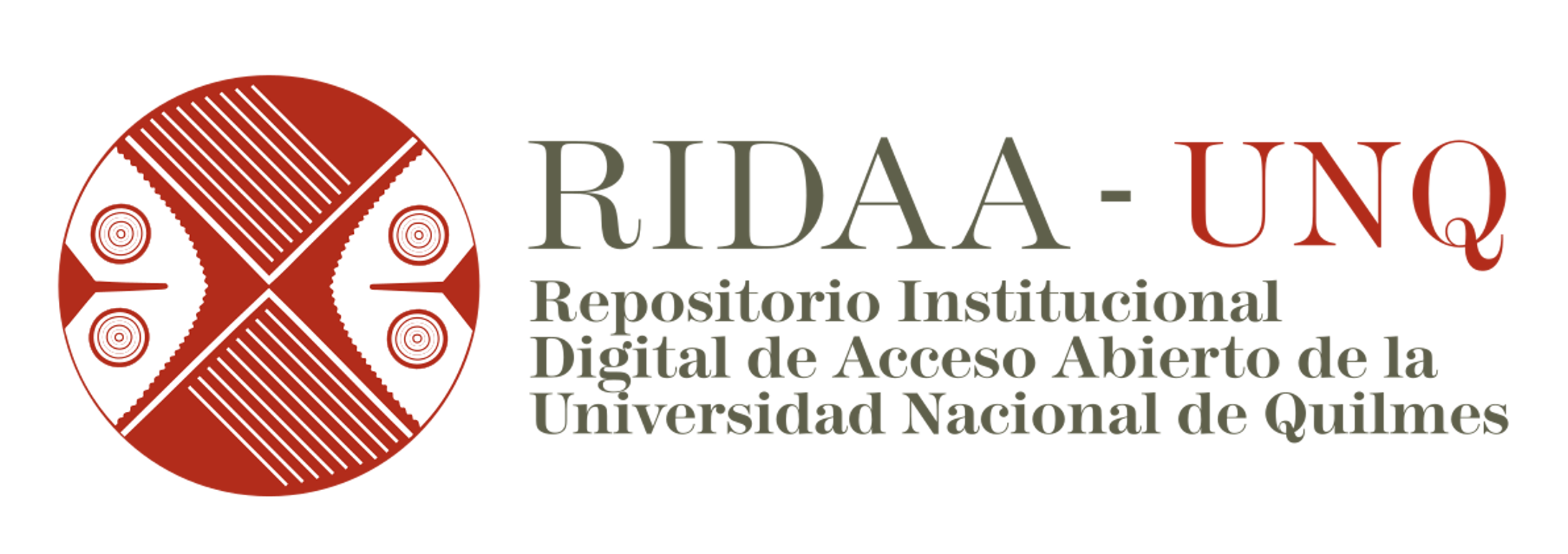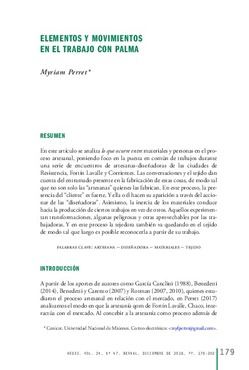Elementos y movimientos en el trabajo con palma
Elements and movements at the work with palm
Abstract
En este artículo se analiza lo que ocurre entre materiales y personas en el proceso artesanal, poniendo foco en la puesta en común de trabajos durante una serie de encuentros de artesanas-diseñadoras de las ciudades de Resistencia, Fortín Lavalle y Corrientes. Las conversaciones y el tejido dan cuenta del entramado presente en la fabricación de estas cosas, de modo tal que no son solo las “artesanas” quienes las fabrican. En este proceso, la presencia del “cliente” es fuerte. Y ella o él hacen su aparición a través del accionar de las “diseñadoras”. Asimismo, la inercia de los materiales conduce hacia la producción de ciertos trabajos en vez de otros. Aquellos experimentan transformaciones, algunas peligrosas y otras aprovechables por las trabajadoras. Y en este proceso la tejedora también va quedando en el tejido de modo tal que luego es posible reconocerla a partir de su trabajo. In this article we analyze what happens between materials and people in the artisanal process, focusing on the sharing of works during a series of encounters of artisans-designers from the cities of Resistencia, Fortín Lavalle and Corrientes. The conversations and the weaving give account of the framework present in the manufacture of these things, in such a way that not only "the artisans" make them. In this process the presence of the “client” is strong. She or he appear through the work of the “designers”. Also, the inertia of the materials leads to the production of certain works instead of others. Those undergo transformations, some dangerous and others usable by the workers. And in this process the weaver remains in the weave in such a way that later it is possible to recognize her from her work.

